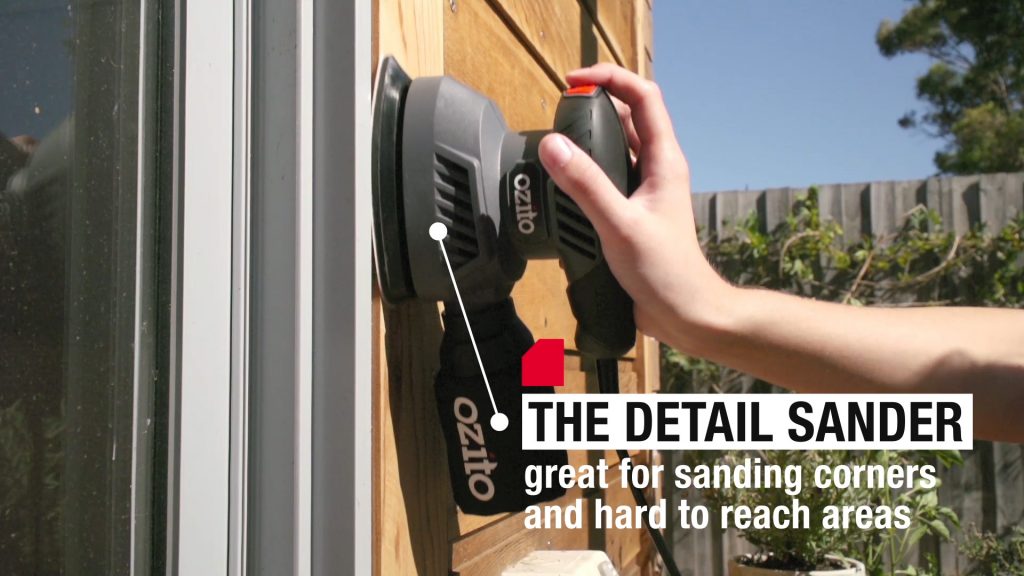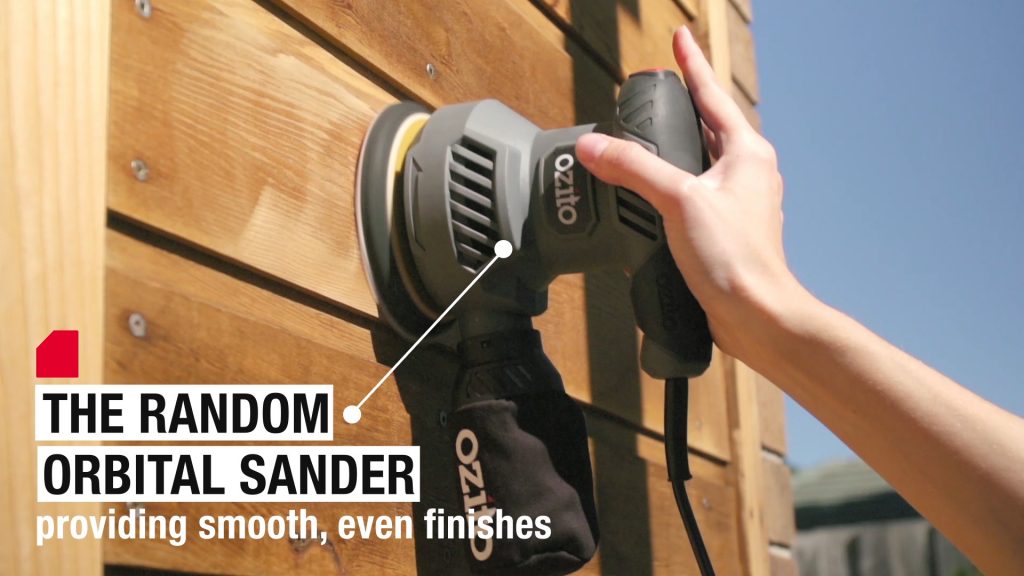TYPES OF SANDERS

For most projects, sanding is an essential part of the DIY process. Whether it’s preparing upcycled materials, removing paint for a refurbishment or applying the finishing touches, sanding gives your job a smooth, stylish finish.
Power sanders have made the tiresome task of scrubbing away excess material away manually a thing of the past. They’re a game-changing tool and to help you find the right sander for your next job we’ve prepared a quick run down on the different kind of sanders, what job you’ll need them for and how to use them.
ORBITAL SANDER
The orbital sander vibrates moving the sandpaper around in little circles. They are the gentlest of the bunch and are best used to remove a fine layer of excess material. Common applications including sanding back small amounts of paint or varnish to prepare a surface or applying the final finishing sand.
The pros
- Lightweight
- Maximum control
- Won’t cause damage to the surface
The cons
- Not capable of heavy duty sanding to remove thick layers of material quickly
DETAIL SANDER

The detail sander is a triangular orbital sander designed to get into fine edges and around tight corners. Great for furniture or any job with hard to reach places.
Tip: Orbital sanders are at their most effective when moved with the grain of the wood.
RANDOM ORBITAL SANDER
The random orbital sander is the most versatile sander on the market. It has a round sanding pad that vibrates while also spinning around in a circle at the same time. Random orbital sanders are capable of removing a significant amount of excess material but still able to deliver a super smooth finish.
The pros
- More heavy duty than an orbital sander
- Versatile for a range of applications
The cons
- Slower on large heavy duty jobs than a belt sander
- Circular shape is not suited to tight corners
Tip: Random Orbital Sanders are most effective if not too much pressure is applied.
BELT SANDER
Belt sanders have two drums that the sand paper revolves around rapidly. They are perfect for removing a large amount of excess material from large flat surfaces such as floorboards.
The pros
- Makes light work of heavy duty sanding
- Perfect for flat surfaces
The cons
- Can only be used on flat surfaces
- Can damage the working surface if you’re not careful
- Doesn’t always leave the smoothest finish
Tip: Always use the belt sander with the grain of the wood to minimise your chance of damage the work surface.
Bonus tip: Ensure you have pressure on the belt sander to stop it ‘running away from you.’
These are the four most common kinds of electric sanders and they’ll be able to cover a large majority of your projects. For more specific jobs you can also find specialty sanders such as sander polishers, drum sanders or rotary tool sanders – resulting in super fine, detailed work.
Explore our range of sanders to find the perfect fit for your next job.


